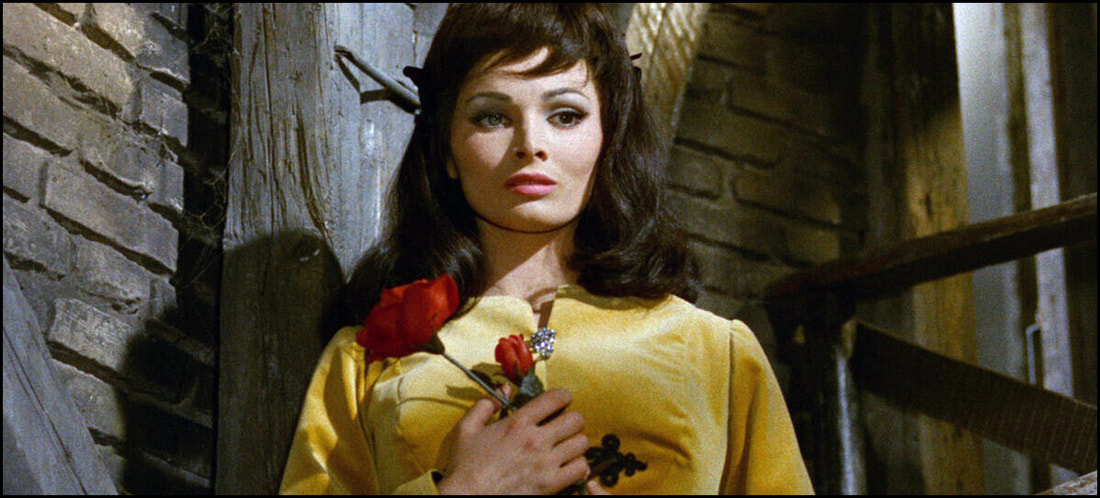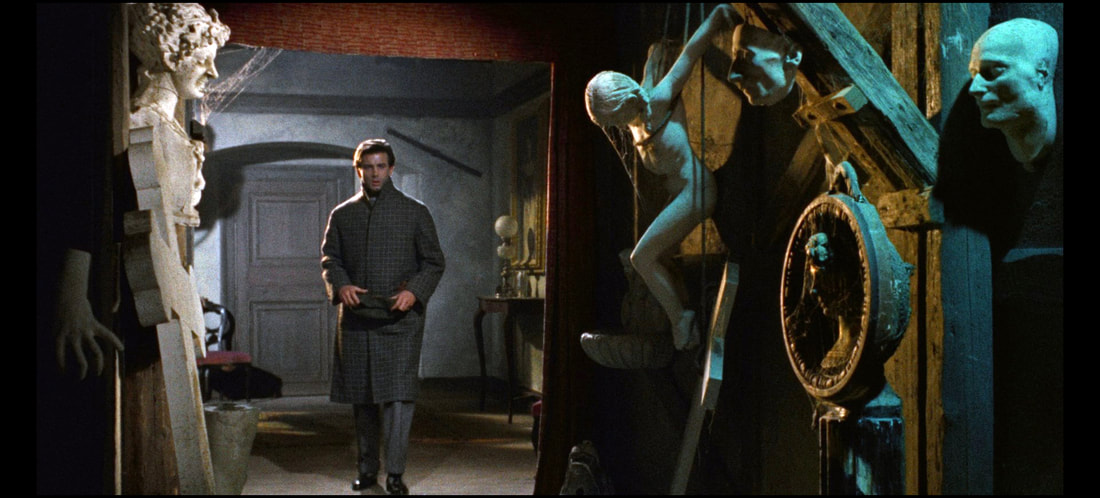As the standards and practices teams around the world have kinda/sorta lessened their collective grip, they’ve allowed more and more to be shown theatrically to the masses-at-large. Naturally, storytellers have responded by continuing to push the limits of what’s acceptable up on the silver screen by crafting thrillers more and more gruesome and/or more and more sensual than what’s come before. However, mine is an ‘old soul’: I have an affinity for storytellers of the bygone eras of the 1950’s, 1960’s, and 1970’s … when talented craftsmen (and women) had to work much harder at conveying a sense of – say – doom and gloom with mere visual suggestions that would get past the censors of their era … not to mention how they had to tweak, titillate, and tantalize the suggestion of (ahem) sexual attraction that has, does, and always make up a part of our dailies lives.
What can I say? Older films just had to make do with far less.
And – speaking of older films – one of the more curious entries I’ve had the good fortune to watch & review recently was the Arrow Video release of Mill Of The Stone Women (1960). According to Blu-ray.com, this version hit the shelves on December 7, 2021, and those interested in knowing more specifically of what I thought of this package can find my review on SciFiHistory.Net right here. Seriously: I always encourage readers to check it out as that’s just good business for me.
As per the facts provided by the good people at IMDB.com, the film was released on this day back in 1960 in its native Italy. (Curiously, IMDB.com sites several Italian dates, so I’m guessing this thing likely rolled out premieres in a short city-by-city effort to ramp up its marketing efforts of the day.) A small team of writers are credited for the effort – the chief of which appear to be Remigio Del Grosso cited for the ‘scenario’ and Pieter van Weigen cited for a related ‘short story’ – and the film was directed by Giorgio Ferroni. The cast include such names of the day as Pierre Brice, Scilla Gabel, Wolfgang Preiss, Dany Carrel, and Liana Orfei. Here’s the plot summary as provided by IMDB.com:
"In 19th century Holland, a professor of fine arts and an unlicensed surgeon run a secret lab where the professor's ill daughter receives blood-transfusions from kidnapped female victims who posthumously become macabre art."
In thinking about windmills – the setting for much of the affair – it’s hard to conjure up any sense of dread. They’re idyllic settings, structures set in an expansive countryside ripe with brilliant flowers and a stretch of green grass. But that’s not quite the case in Stone Women: though some interiors are rendered with some brilliant colors, there’s a cold and cruel lifelessness to the exteriors, perhaps symbolizing that not all is as it seems in this particular location … a sentiment not all that far off-the-beaten-path.
As I suggested above, the real impact of the film lies in its technicians, for it is they who gave the picture an incredible depth of palette in creative ways. They brought a measure of ‘breath’ to a place otherwise preoccupied with the existence of statues – frozen as they are and only presenting a snapshot of what life was. This chilling glimpse into one man’s attempt at playing god likely would’ve failed in any other rendering, and it’s why the picture remains worthy of study by those of us who appreciate what’s been done before.
-- EZ







 RSS Feed
RSS Feed